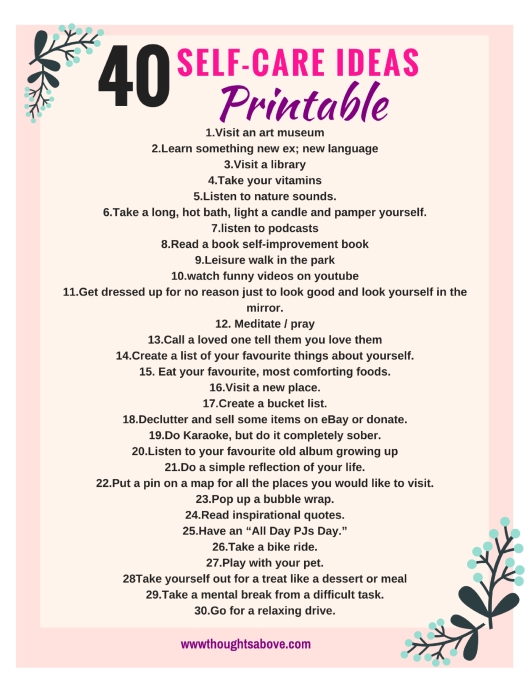GO NATURAL: 18 best essential oils for nerve pain

Aroma Utopia had an awesome infographic (see above) listing some essential oils you can use to deal with nerve pain. I wanted to highlight this information because, as you know if you a reader of this blog, I do everything I can to minimize drugs and other conventional treatments for my chronic illness. Essential oils are a huge part of my daily life, and the more things I can find to do with them, the better.
I’m going to borrow some of the background stuff they had along with the infographic, just so you can all understand nerve pain and how to treat it.
Symptoms of Nerve Pain
There are many symptoms of nerve pain, which might limit your ability to continue with normal daily activities. They include:
- Extreme sensitivity to touch.
- A sharp, burning sensation or stabbing pain.
- Muscle weakness.
- Numbness in the hands and legs.
- Lack of coordination and falling down.
Now for more on the essential oils:
Balsam Fir – Balsam Fir is often part of the quintessential Christmas tree. The Fir Needle is a natural analgesic and antispasmodic for relaxing muscle aches and pains. It is often used in the treatment of muscle recovery following exercise or a work out. It works by promoting more blood flow to the skin, which increases recovery.
Bergamot – Research studies conducted by the University of Calabria have reported that Bergamot essential oil modifies and inhibits the nociceptive behavioral effect. Another study showed that data gathered so far indicates that bergamot is endowed with anti-nociceptive effects.
Black Pepper – This essential oil is a known pain reliever by toning the muscles and use in sciatica. It acts as a tonic and analgesic for the nervous system and increases circulation. One study showed that black pepper essential oil possesses antioxidant, anti-inflammatory and anti-nociceptive properties.
Roman Chamomile – This is an essential oil with anti-neuralgic properties. It helps to relieve the pain associated with nerve damage by constricting the blood vessels surrounding that particular nerve. In doing so, it reduces the built-up pressure and relieves the pain.
Peppermint – Peppermint is one of the most widely researched oils by the scientific community. It is known for its analgesic and anti-inflammatory properties. As a pain reliever it provides nervous system support, improves respiration, controls muscle spasms and relieves gas and bloating.
Rosemary – This essential oil is a mild pain reliever that increases circulation, helps with sciatica and neuralgia. It helps to relax the muscle fibers and remove lactic acid. Being anti-rheumatic it can suppress muscle spasms and improve respiration.
Marjoram – This essential oil is another natural pain reliever that is effective in helping to manage nerve pain. It works as a tonic on the entire nervous system by strengthening the area where the nerve damage has occurred.
Black Spruce – This essential oil is a natural antiseptic, antiparasitic and anti-inflammatory pain reliever. It helps to relieve muscle spasms, promote muscle repair, improve circulation, help to stimulate the immune system and help to clear cell receptor sites. It is especially used for back pain, arthritis, and sciatica.
Lavender – Lavender has calming and stress relieving properties. It helps to relieve nervous tension and nerve pain. It has also been used and shown in some surgical procedures to reduce pain.
Helichrysum – Helichrysum is an anti-inflammatory antispasmodic naturally occurring nervine that strengthens and regenerates the nervous system. It helps to relieve nerve pain by reducing stress levels associated with it. It can also reduce inflammation for joint pain, acne and burns.
Eucalyptus – Eucalyptus is a must have oil for any household. Because it has antispasmodic, ant-inflammatory and analgesic properties, it has been recommended for relieving nerve pain, aches and muscle pain. One of the best ways to apply is by massaging eucalyptus oil on the skin so it can help to relieve stress and pain.
Frankincense – The oil is known to transmit messages to the brain’s limbic system, which influences the nervous system. It stimulates the immune system, relaxes the muscles and works as an antiseptic.
Geranium – Geranium oil acts to reduce neuropathic pain, especially when applied to the skin. Studies have shown that it is effective in reducing pain after shingles.
Ylang Ylang – Among its many uses Ylang Ylang acts as a nervine and sedative. It repairs and reduces the stress of nerve damage.
Wintergreen – One of its main compounds is methyl salicylate, an organic ester which metabolizes in the body to salicylic acid, which has similar properties to cortisone, an NSAID. The oil therefore, has excellent properties for relieving nerve pain as a natural analgesic, anti-arthritic numbing agent.
Ginger – Ginger consists of sesquiterpenes, which are responsible for its anti-inflammatory, antibacterial, and other analgesic properties. One study identified Ginger essential oil as possessing antioxidant activity as well as significant anti-nociceptive properties.
Clary Sage – One of its best uses is for soothing nervous tension. It can also be helpful for stomach pains, kidney problems, and tumors when applied to the skin.
Clove – Clove oil is high in antioxidants. One of its current applications is in toothpaste as it has the same analgesic effect as benzocaine, a topical agent also used for ingrown toenails, hemorrhoids, tooth pain and sunburn. It works by blocking the nerve signals.
Now that you know WHICH oils to use, here’s some information on HOW to use them:
How to use Essential Oils for Nerve Pain
There are many other ways that you can administer essential oils to your body. Some of them are listed below:
Creams and Lotions – There are creams and lotions available that contain the essential oils you need. You can also make your own cream and lotions by buying a blank lotion or cream and adding the essential oils to it.
Aromatherapy Bath – You can use essential oils in aromatherapy baths. Add a few drops of the essential oil directly to the bath water and then add some Epsom salt to allow the oil to blend with the water and enhance the effect. This will prevent it from floating on top of the water.
Essential Oil Massage – You can massage essential oils into the areas affected by pain. If you are making your own massaging oil, apply by blending with carrier oils.
Diffusing – One of the most common ways to apply essential oils is aromatically by using an essential oil diffuser. There are several types ranging in the way the oils are dispersed. Please check out our infographic.
Reflex Points – Applying essential oils to known reflex points can have many benefits, especially if you know what each point is used for.
Pre-Made Synergy Blends – Many of the major essential oil companies now sell synergic blends of different essential oils for a particular ailment or purpose e.g. “Anxiety Ease”, so it is useful to look out for them if you didn’t want the hassle of creating your own recipe or blend.
Which oils do you use for nerve pain? Tell me in the comments!





 Photo courtesy of Creative Commons, used with permission from
Photo courtesy of Creative Commons, used with permission from 


















